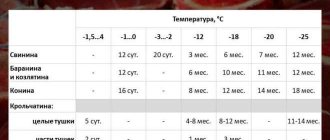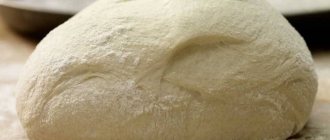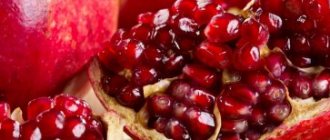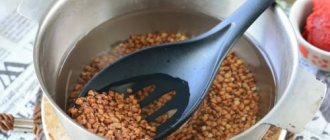Beetroot is a popular vegetable on our table. It is tasty and familiar in Russian cuisine. The red root vegetable is useful for its properties. It is boiled, stewed, and eaten fresh. The vegetable contains a lot of useful vitamins and minerals for our body. Recently, fresh drinks have been gaining popularity - freshly squeezed drinks from fruits and vegetables that benefit everyone: both children and adults.
A fresh root vegetable drink contains a set of useful vitamins and microelements necessary for men, women and children. Let's figure out how to drink beet juice correctly? Is it useful in its fresh form and are there any contraindications to its use?
What and how long should you store freshly squeezed juice?
It is considered most optimal to store juice in a hermetically sealed glass container, where oxidative processes will occur more slowly.
The product must be on the refrigerator shelf, where it can remain usable for 12-24 hours. Storing juice in a plastic container is undesirable, since this material (polyethylene terephthalate) cannot be sufficiently sterilized. Therefore, the pomace, being in such a container, will in no way be protected from the development of harmful microorganisms in it. In this case, fermentation will begin earlier than for the same product in a glass container that has undergone sterilization.
Storing juice in a vacuum is much more effective than storing juice in glass or plastic containers. Under such conditions, the product will not interact with air and can be stored for several days. The fresh juice is poured into a vacuum container, after which the air is pumped out of it using a special device. But you should remember that the healthiest drink is one that was made no more than an hour ago.
Apple fresh
The shelf life of freshly squeezed apple juice in the refrigerator is 12-18 hours due to rapid oxidation. This product is susceptible to rapid destruction of vitamins. To keep it for 1 day, it should be mixed with a few drops of lemon juice.
Citric
Even taking into account the natural preservative properties of this citrus, lemon juice can only be stored in the cold for 3 days. And in the heat it will begin to deteriorate after 3 - 4 hours.
Orange
Orange squeeze is most popular among healthy eating enthusiasts. Many different drinks are made from it, combining it with apple juice, carrot juice, etc. Mixed types of pomace are stored for no longer than 24 hours. Fresh orange juice can be consumed within 2 days. Provided it is stored on the refrigerator shelf.
Birch
Freshly collected birch sap retains its quality for 3 days. The main condition is to keep it in a glass container, tightly closed. If the drink has not been drunk within 3 days, it should be thrown away without regret. This product can no longer be used.
Carrot
Carrots are very healthy due to their carotene content. Therefore, fresh carrot juice is recommended for everyone. But there is a minus here: it must be consumed immediately after production. Interaction with air after 20 - 30 minutes leads to the destruction of most of the beneficial substances contained in the liquid.
Beetroot
Beet juice is an exception. It should be consumed after it has infused. Usually, 2-3 hours in the refrigerator is enough for this. The shelf life of beet juice is about 3 days.
Cranberry
It is not customary to mix cranberry juice with anything else. But it is often used to make healthy fruit drinks, which can be stored in the refrigerator for 2 days.
Tomato
Fresh tomato products are rich in folic acid, iron and other substances needed by the body. But you won’t be able to keep it for long. This drink should be used within 12-18 hours from the moment of preparation. And store only in the refrigerator, in glass or ceramic containers. Once opened, a canned drink can be stored for a little longer - 1-2 days.
In what container should fresh juice be stored?
Suitable container:
- glass jars;
- bottles, glass decanters;
- ceramic containers;
- glasses with lids.
Unsuitable:
- plastic bottles;
- disposable containers;
- aluminum container.
Utensils made from safe materials suitable for sterilization are used. The ideal option is glass. The worst way to store freshly squeezed juice is in plastic, packs and lemonade bottles. Do not leave juicers or blenders in open containers.
Instructions for preparing dishes:
- Wash thoroughly and rinse.
- Place on the spout of the teapot. Warm up under steam.
- Or pour water onto the bottom and heat it in the microwave.
- Dry.
Instead of sterilization, thorough washing with soda is allowed. Next, the container needs to be rinsed and dried from moisture.
Freezing beet juice
When crushing root vegetables, a lot of juice is sometimes released. Beetroot juice is a preventive and even therapeutic remedy for anemia, problems with the liver and biliary tract. It is especially useful for women during certain periods associated with the menstrual cycle. In order not to lose such a valuable product, it is also frozen. The squeezed juice is filtered through a fine sieve or cheesecloth and poured into containers that are usually used for freezing ice, since it is not consumed in large quantities. You should know that the usefulness of fresh beetroot is proportional to its shelf life, so keeping it in the freezer for more than three months is not recommended. Also, do not rush to throw away a product that has passed its “expiration date”; it can be used as a natural coloring in the process of preparing various dishes.
The juice is a concentrate of all the beneficial substances contained in beets.
How to understand that the juice has not spoiled
However, even if the storage times and rules are observed, the drink can still go bad. First of all, this will be indicated by the color becoming dark. When spoilage occurs, the juice oxidizes and becomes cloudy, and an unpleasant sour smell and taste appears.
Spoilage can also be expressed in the form of mold, rancid taste, the appearance of mucus in the drink, sedimentation and other changes in the product. Such a drink should under no circumstances be consumed as food or for treatment and should be disposed of immediately.
Beetroot juice is a truly healing drink. The scope of its application is very wide, both in medicine and in cosmetology. First of all, the individual characteristics of the human body should be taken into account, however, with proper use and storage, obtaining a beneficial effect in the treatment of many diseases is guaranteed.
What if there is no cellar?
There are also many other ways to store carrots, which are perfect for those who do not have cellars.
For storage you can use a balcony, basement, refrigerator, pantry or underground. The best conditions for storage are air humidity of about 90% and a temperature of 1-2 degrees above zero.
It is best to store this root vegetable in a dark, cool place, away from heating systems. Some gardeners leave carrots in the beds or make an earthen pit.
How to store vegetables at home without a hole?
If it is not possible to use a cellar or pit, you can extend the shelf life of carrots in other ways:
In the apartment
To preserve carrots in an apartment, it is necessary to carry out the “claying” procedure. To do this you need:
- Rinse the carrots from the soil.
- Dilute the clay with water until a creamy consistency is formed.
- Dip clean carrots into clay.
- Wait until the clay dries, forming a protective crust, and put it in a cool place.
Attention! Clay will not only provide long-term storage, but will also protect carrots from diseases.
On the balcony
Before frost sets in, you can store vegetables on the balcony, in bags or covered wooden boxes. It is also necessary to cover the carrots so that daylight and dust do not fall on them, if the balcony is not glazed. If you have a glazed loggia, you can store carrots on the floor. You will need:
- lay down burlap;
- pile carrots on it;
- cover the top with another piece of burlap so that the carrots are reliably protected from daylight.
In banks
If the size of the fruits is not too large, then you can store them in jars. To do this you need:
- Wash the jars well with detergent or boil.
- After that, let them dry, fill them with carrots so that there is a small distance between the fruits.
- Sprinkle with sawdust, or add a small horseradish fruit.
In a refrigerator
There is a special compartment for storing vegetables in the refrigerator. To keep carrots in the refrigerator for as long as possible, you must also thoroughly rinse and dry them. After this, place in plastic bags and put away.
Unfortunately, carrots quickly lose moisture in the refrigerator and become shriveled over time. Usually, such vegetables are immediately thrown away, however, there is a way to refresh them. To do this, you will need to cut off the lower end of the carrot and place it in a glass, one-third filled with water, and for the best effect you will need to add a couple of ice cubes. After a couple of hours, the carrots will be transformed and will become fresh and juicy again.
Ways to give
If there is no cellar at your summer cottage, you can store carrots in a special pit, in beds or in the underground.
In the underground/basement
If the house is equipped with an underground floor, then you can store vegetables in it using the same methods that are used when storing in the cellar. The main thing is that the optimal temperature and air humidity be maintained in the underground storage area.
In the hole
In order for carrots to be stored in a pit for as long as possible, it is necessary to prepare them. To do this you need:
- Stop watering two weeks before harvest.
- Carefully dig up the carrots so that they are not damaged, remove excess soil and dry.
- Cut off the tops to the very top.
Next you need to prepare a pit for storing carrots:
- Dig a hole, the depth of which will depend on the area where you live. Reference! Where the winters are quite severe, the depth of the hole should be at least a meter, and where the soil hardly freezes - approximately 30-40 cm.
- Cover the bottom of the pit with sand, the layer of which should be no more than 3 cm, then alternate layers of carrots with sand until approximately 25 cm remains to the surface.
- After this, it will be necessary to fill the last layer with sand, and pour earth on top so that it rises above the surface.
- The final step will be to insulate the pit using dry leaves, peat or sawdust.
In the garden
You can store carrots in the garden if the soil does not have any diseases, there are no wireworms, mole crickets and other pests.
Organizing storage in the garden includes the following steps:
- Stop watering the garden bed a month before preparing for storage.
- Choose a period when there will be no rain for at least a week and the soil will dry out.
- Weed the bed of all weeds.
- Cover both the bed itself and the area within a meter radius with a layer of sand, the thickness of which should not exceed 3 cm, 5. Cover with plastic wrap, cover the bed with dry leaves, sawdust, peat, and cover with another layer of film on top.
Alternatives
When there is no free space in the refrigerator, you can organize beet storage on the balcony.
Prepared unpeeled vegetables are laid out in boxes (each layer is sprinkled with clean sand) or packaged in bags (the polyethylene must have holes for ventilation).
After which they are sent to a dark, cool place (temperature no higher than +5C) with good ventilation. If the balcony is not insulated and in winter the air temperature in the room may drop below normal, the boxes with beets are additionally insulated with foam lining.
Buryak tolerates being near potatoes very well. By putting vegetables in one box, you can save a lot of free space on the balcony. Another non-standard method of storing beets at home is drying (good for small volumes of root vegetables).
The beets are peeled, chopped into thin slices, after which, spread on parchment in one layer, dried in the oven at 90 C for seven hours . During the drying process, vegetable slices must be turned over periodically.
Dried beets can be used to prepare first courses, and after softening the slices in warm water, they can be used as an ingredient for salads and appetizers. For kids, dried beet slices are an excellent substitute for fried potato chips.
Peculiarities
The shelf life of root vegetables varies depending on the form in which it is sent to storage.
In the peel
Unpeeled beets can be stored indoors, in the freezer, or on refrigerator shelves.
At room temperature
Beets do not really like warm rooms and it is difficult to maintain all the conditions necessary for storing them in an apartment. Therefore, you cannot keep such a vegetable at room temperature for a long time.
The ideal place for storage would be a balcony. And if in winter the temperature in this room drops to below zero, vegetables need to be brought into the room. If they freeze, they will become unfit for consumption.
Root vegetables can also be kept in a cool room, under a bed or closet (if you have space) or in the pantry. The optimal temperature for storage is up to 12 C°. In such conditions, vegetables can be stored for 3-4 months.
In the freezer
Freezing is the best way to preserve the appearance of beets and their taste. There are a few tips to keep in mind before putting them in the freezer:
- It is better to divide frozen specimens into portions. After all, this vegetable cannot be sent to the freezer again.
- If you need to freeze whole root vegetables, it is better to put them in a freezer with fast freezing (-18 C°).
- It is better to freeze young varieties; vegetables should be fresh.
- Before freezing, the root vegetable must be thoroughly washed and the skin removed. Then puree with a blender or cut into cubes. Send the prepared product to be frozen at a temperature of -10 to -14 C°.
With proper preparation, the vegetable can stay in the freezer for 8-12 months.
In a refrigerator
In the refrigerator, beets remain fresh, tasty and healthy for 3-4 weeks at a temperature of 2-4 C°. Next, the vegetables will begin to wilt.
There are several ways to store root vegetables:
- Pack in a paper bag - shelf life will be 1-2 weeks.
- Clean each vegetable from dirt using a dry method and distribute into plastic bags. It is necessary to make holes in them for natural ventilation. This way the root vegetable will keep in the refrigerator for 2-3 weeks.
- If the vegetables have been washed under water, they can be kept in the refrigerator for 5-7 days.
Purified
Peeled beets quickly gain moisture and wither. It can be stored in the refrigerator in several ways:
- package in vacuum bags - here it can be stored for up to 30 days;
- Next to other vegetables, washed and peeled beets can be stored for no more than 3 days.
Fresh juice
Immediately after squeezing, the juice is placed in the refrigerator for 2-3 hours. Here it settles, the benefits of the drink will be maximum, and the harmful components will disappear.
Freshly squeezed juice contains the most beneficial substances, so it cannot be stored for a long time. The maximum period is up to 3 days. In the future, the beneficial properties of the drink are lost.
Boiled
Unpeeled boiled vegetables can be stored in the refrigerator at a temperature of 2 to 4 C° for up to 3 days.
If the air temperature is from 20 to 25 C°, whole boiled vegetables are stored for no longer than 12 hours, chopped vegetables - no longer than 12 hours. Boiled beets can be stored in the freezer for up to 30 days at a temperature of -12 C°.
To prevent the boiled vegetable from absorbing foreign odors and losing its taste, it can be kept in the refrigerator wrapped in cling film. Or in a ceramic container, tightly covered with a lid. It is better to store baked root vegetables in foil.
How to store boiled beets in the refrigerator correctly and for how many days, this article will tell you where, in what and how long boiled beets are stored - this one.
Grated
Grated beets can be stored in the freezer. This is an excellent preparation for borscht - you don’t need to grate the vegetable again every time. It is enough to defrost it and use it to prepare the first dish.
The root vegetable needs to be grated or crushed in a food processor. Distribute the resulting mass into bags or containers, close and place in the freezer. Shelf life - 8 months.
Seeds
Seeds must be kept in such conditions that all seed qualities remain intact. To do this, you must follow the storage recommendations:
- in a warm and humid room, seeds will lose their viability within a few months;
- air should not flow freely to the seed - otherwise the seed quality will deteriorate in a few weeks;
- Sudden temperature changes during storage should not be allowed;
- seeds are stored at a temperature of 12-15 C° and air humidity of about 50%.
Beet seeds should not be left in damp and cold conditions for a long time. If damp specimens are stored at sub-zero temperatures (down to -10 C°), this can be detrimental to them. Especially if the temperature repeatedly passes through 0 C°.
How to choose beets for a drink
The taste is influenced by which vegetable is chosen for preparing fresh juice. To get tasty and nutritious beet juice, you shouldn’t buy the first root vegetables you come across in the store.
What you need to know to choose the right vegetable:
- To prepare fresh juice, root vegetables of dark burgundy, red or purple colors are used.
- There should be no white or black veins inside, which indicate the depravity of the beet or its immaturity.
- Oval or spherical varieties are excellent.
- There should be no rot, mold, mechanical damage, or dents on the surface of the skin.
- You should not take root vegetables that are too large (more than 12-15 cm in diameter), because they contain a large amount of harmful substances.
- Green tops indicate that the vegetable is young and juicy, which means you will get a sweet and tasty fresh juice.
The Incomparable, Griboyedovskaya Ploskaya, and Bordeaux varieties are excellent for making freshly squeezed juice.
Storing beets in a city apartment
Beet storage conditions:
- in a dark, ventilated place;
- with temperatures from 0°C to +2°C;
- humidity - from 90% to 95%.
As you can see, long-term storage of beets in a city apartment is difficult.
Storing root vegetables in the refrigerator
Beets are kept in the refrigerator for no more than 30-45 days. After this, it gradually loses its beneficial properties. Root crops are preserved in several ways:
- Unwashed, but cleared of soil, sweet root vegetables are placed in plastic bags. Several holes are made in the bags. Packaged root vegetables will keep in the vegetable container for up to 6 weeks.
- To keep them in vacuum bags, vegetables are washed. Experienced housewives advise doing the treatment in a saline solution. Afterwards, the root vegetables are dried, sealed in bags and placed in the refrigerator.
- Plastic containers serve as convenient containers. Wash vegetables under a tightly closed lid are stored for up to 4-5 weeks.
- For short-term storage in the refrigerator, place in a vegetable drawer with other products. A medium-sized root crop will last 2-3 weeks.
Is it possible to store beets in the freezer?
Beets are stored in the freezer for a long time, but lose some of their beneficial properties. The taste of the vegetable will change slightly, but the color will remain bright.
Experienced housewives prepare “semi-finished products”. For convenient use, they chop the beets on a coarse grater, cut them into cubes and strips. Using a blender or meat grinder, grind the root vegetables into fine crumbs.
Chopped vegetables are placed in bags or containers and placed in the freezer. Shelf life - 2-3 months. After this time, the vegetable begins to dry out.
Storing beets in plastic bags
Unwashed, dried, cleared root vegetables are placed in bags without tying them. Choose a dark, cool place in the apartment, away from the heating system.
In such conditions, medium-sized root vegetables will last no more than a month.
On the balcony
There are several ways to store vegetables on a glazed and insulated balcony:
- In sand boxes. A layer of sand moistened with water is poured into a wooden container. Prepared vegetables are “planted” in a box so that the root vegetables do not touch each other. Sand is poured on top.
- In boxes with sawdust. The principle is the same. The sawdust is not wetted.
- In clay. It is diluted to the state of liquid sour cream. Each vegetable is dipped, dried and placed in a container.
- In plastic bags. Untied bags of vegetables are placed on shelves and in cabinets. Cover loosely with a cloth, protecting from direct sunlight.
Low wooden boxes or plastic containers are convenient for storing vegetables. Medium-sized root vegetables store well.
How to store beets in an apartment
In winter, vegetables are stored in the apartment:
- On the balcony. Necessary conditions: glazed, insulated. Shelf life - up to 5-6 months.
- In the storage room. Conditions - located in the apartment away from the kitchen, there is no battery nearby. Vegetables can be stored for up to 1 month.
- In a refrigerator. Food in the vegetable drawer lasts up to 1.5 months.
- In the freezer. The optimal shelf life is no more than 3 months.
Preparation for storage
Before putting the beet in the refrigerator, it must be properly prepared:
Sort .
Only whole root crops not damaged by rot are selected for storage. Broken and disease-damaged vegetables are sent for processing. Ideal beets for storage look like this: a healthy, defect-free fruit, with a diameter of 10 to 12 centimeters.Larger tubers with a fibrous structure lose their taste and juiciness after long-term storage.
- Dry it . Before long-term storage, the beet must be kept for up to two to three days in a dry, well-ventilated place with diffused lighting (direct sunlight is harmful to root crops). If vegetables enter the house from wet beds, the drying time increases to seven days.
- Clear . Before putting the beets in the refrigerator, carefully remove the tops from each tuber. The leaves are cut with a sharp knife, leaving an even cut of the petioles of 1 cm. The main root is also shortened with a sharp knife to 5-7 cm. The thin lateral roots are cut clean. You cannot twist the tops by hand!
There is no need to wash whole tubers before storing them in the refrigerator. Large pieces of soil are cleaned with a soft brush, leaving a thin layer of soil as a natural protective barrier that preserves root crops from rotting, drying out, and damage from pathogenic bacteria.
A few words about potato fast food
One of the most popular and best-selling fast food items is French fries. In the McDonald's chain of enterprises it is present in almost every order. Due to its structure and the influence of a number of factors, this product cannot be stored for a long time. After conducting numerous experiments, the corporation's specialists established the optimal storage time for French fries - exactly 5 minutes. But these are McDonald's standards, which took into account, first of all, taste. In fact, the dish is suitable for consumption for 18 hours, but when it begins to cool, it quickly loses its original rich taste and aroma. You can extend the “life” of finished fries by placing them in the refrigerator, but with this storage method, the taste of the dish will be irretrievably lost. No microwave or strong heating will bring them back.
Beneficial properties of beet juice for our body
The beneficial effects of beet squeeze on the human body are very extensive:
- Purification and improvement of blood composition by increasing the content of red blood cells.
- Mild analgesic effect - the juice softens or eliminates pain.
- Deep cleansing of all systems and organs due to the excretion of toxic substances.
- Improving digestive functions, drinking is simply necessary for the liver - it helps restore hepatocytes.
- Stabilization of metabolism.
- High concentrations of lipotropics make vegetable drinking effective for weight loss. Treatment of first and second degree obesity involves the use of this drink.
- The active components tone the blood vessels, which helps normalize blood pressure. This property is especially important for people suffering from hypertension.
- Gradual stimulation of the functions of the lymphatic system.
- Dropping juice into the nose helps prevent a runny nose.
- Increasing immune potential, resistance to viral and bacterial infections, sore throat.
- Reducing the level of bad cholesterol, which is important for coronary heart disease and atherosclerosis.
- Persons suffering from hypothyroidism and thyroid hormone deficiency should drink the drink to improve their health.
- Regular consumption of freshly squeezed juice improves complexion.
Methods and terms of storing boiled beets in the refrigerator
How many days you can store boiled beets in the refrigerator depends not only on the temperature. The size, skin, and cutting shape influences.
Do you buy boiled beets?
I buy and cook
Approximate shelf life:
- up to 3 days peeled whole root vegetables;
- up to 4 days, whole unpeeled beets;
- up to 2 days, halves and quarters of vegetables;
- up to 24 hours grated, cut into cubes, strips, small slices.
Next, we will analyze in detail which dishes are best suited for storing boiled root vegetables.
Special bowl
Chopped, peeled vegetables are stored in bowls. You should choose the appropriate size. If there is an impressive air gap, the product will deteriorate, dry out, and become covered with plaque. With the right approach, a whole root vegetable will last up to 3 days. There is no need to waste time with the bookmark for storage. Especially when using slicing.
What materials are suitable:
Such bowls impress with their environmental friendliness, hygiene, and do not emit harmful substances. The product retains its characteristic taste and smell. The only drawback is the inconvenience of use. The dishes are reusable and will require washing and drying.
Plastic bag
An ordinary bag is not the best packaging for boiled beets. The product will release juice that has nowhere to drain. Don't try to create a vacuum. Nothing will work out. The shelf life in the package should not exceed three days.
How to store boiled beets in a bag correctly:
- Boil, cool. Clean if necessary.
- Dry with paper towels.
- Place in a bag and tie.
- Make holes for ventilation.
- Place in the refrigerator.
Root vegetables are stored in cling film in a similar way.
It is important not to forget to make holes for ventilation. Otherwise, the vegetable will very soon become slimy, and microorganisms will begin to multiply in the juice flowing to the bottom.
Vacuum package
Vacuum packaging eliminates the impact of anaerobic bacteria. It is universal and is used for storing walnuts, champignons, cabbage, honey, raw beets and other food products. Boiled vegetables in a vacuum retain their bright color, aroma, taste, and juiciness for a long period. Without access to air, they are not susceptible to rotting, molding, or decomposition. This way you can keep horseradish fresh.
Methods for storing boiled beets
To increase shelf life, you can limit the supply of oxygen at home. Whole beets can be stored in vacuum bags for up to 10 days. If there is a special device for removing air, the period increases to 14 days. It is not recommended to pack small slices using this method.
Do not confuse vacuum-packed homemade beets with those sold in stores. The industrial analogue retains its properties for up to three months. After opening, if the packaging is damaged, it is reduced to a day.
Container
Plastic is a controversial material. Low quality containers release hazardous substances. When stored for a long time, vegetables acquire a specific smell and taste. It comes from detergents that were previously used for dishes and previous food products. Therefore, for example, it is recommended to keep sauerkraut at home in glass containers.
The nuances of storing in plastic containers:
- You need to cook the beets in advance so that they cool completely. Otherwise, condensation will appear on the walls. It will shorten the shelf life;
- the vegetable can be peeled or peeled, sliced, grated;
- It’s good if there is a special valve in the container lid. It is recommended to open it;
- You can place a special mesh on the bottom. Dripping juices will not come into contact with the product.
Instead of a lid with a hole, you can stretch cling film, foil, or a plastic bag over the bowl. It is recommended to make punctures to allow air to enter.
How to preserve the product longer?
A vacuum bag will help extend the shelf life of beets in the refrigerator to thirty days. The vacuum 100% blocks contact of the product with pathogenic bacteria, preserves the vegetable from weathering, and prevents the penetration of unpleasant odors into the bag.
Before placing the beet in a vacuum bag, you must:
- Carefully wash each root vegetable, trying not to damage the skin, in warm water, cut off the tops;
- soak the beets in a saline solution for at least thirty minutes (1 tablespoon of salt per liter of water is enough);
- Dry the root vegetables with a paper towel and place them in a single layer in a bag.
A pipe from a vacuum cleaner is applied to a special valve on the bag and, sucking out excess air, the vegetables are packed for long-term storage in the refrigerator.
A good alternative to vacuum bags will be special vacuum plastic containers. They are easy to buy in hardware stores or on specialized websites on the Internet.
Where is the best place to store it?
Of course, it is best to store root vegetables in a place where all the necessary conditions are met. Such places can be found even in an ordinary apartment, so the lack of a summer house or garage cannot become an obstacle to winter preparations.
Underground
The most obvious option is underground. But not everyone has it, so we won’t dwell on it for long. The underground most often has ideal conditions for storing preparations for the winter, so beets can be stored there until the next season.
The best solution would be to install racks, on the shelves of which the beets will be laid out in one layer. There is another more practical option for laying out root vegetables - in small pyramids - it is worth resorting to if you have accumulated a lot of vegetables, but there may not be enough space.
Balcony/loggia
Most apartments have a balcony or loggia. This is a great place to store vegetables in winter if the balcony is glazed and the temperature on it does not drop below zero degrees. Of course, you can’t store large supplies for several families in an apartment, but you can store 20 kilograms.
The main thing is to think about how the air will circulate.
The next option is to use plastic grocery boxes. Usually grocery stores throw them away, so you can negotiate with the staff.
These boxes are convenient for several reasons:
- they already have holes, that is, air will circulate freely;
- they can be stacked one on top of the other like a rack, significantly saving space.
You can store beets in a regular box or even a bucket. But here you will need clean and dry sand - it is even specially calcined in the oven.
Sand is poured into the bottom of the box, then the beets are laid so that the fruits do not touch each other, then the layers are repeated. This design can also be stored on the balcony if the temperature does not drop below zero.
Sand can be replaced with sawdust, onion peels or clay. The clay is diluted with water, vegetables are dipped into the solution, then dried and placed in a box.
In the apartment
Since beets are very sensitive to temperature, if there is no balcony or loggia, their shelf life is reduced to two months. A dark place where the temperature is no higher than 12 degrees is suitable.
It could be:
- space to the entrance or balcony door,
- space on the landing, if the neighbors are adequate;
- pantry;
- an ordinary dark closet.
In this case, it’s easier to process the beets, for example, wrap them in jars and put them in storage.
Fridge
This comrade will always come to the rescue when it comes to food storage, and beets are no exception. Each root vegetable is packaged separately in parchment or foil so that the skin does not become flabby.
You can store raw beets in the refrigerator in this way for up to 3 months, but this is not entirely rational, since they take up a lot of space. It is advisable to choose the lower compartment of the refrigerator, namely the vegetable drawers.
The fruits should be periodically inspected for droplets of water - if they occur, the beets must be removed from the packaging, dried and wrapped again in clean paper or foil.
Another option is to use vacuum bags. The shelf life will be about the same, but this method requires much less effort and time.
You can also use regular plastic bags, but, on the contrary, they cannot be closed. The necessary air circulation can be ensured by making holes in the packaging. In this way, the root vegetable can be stored for up to a month.
Freezer
The freezer is a thing created specifically for long-term storage. Can beets be stored in the freezer? Certainly!
To do this, you need to wash it, peel it and cut it into convenient cubes or grate it. Next, the peeled and cut fruit is packaged.
Some scientists claim that when beets are frozen, they lose some of their beneficial properties. But are there more of them in store-bought vegetables in winter?
You can also freeze boiled beets. All the steps are the same, only the fruit needs to be boiled, then cut and frozen. When using this preparation in salads, it should be thawed. If it is needed for soup, defrosting is not required - the workpiece is simply added to the pan at the very end. This way you can freeze it and fry it completely: with onions, carrots and peppers.
Adviсe
It is very convenient to freeze beets by placing them in bags. After filling, the bags are leveled, releasing excess air to give the most flat appearance. The bags are then stacked in a separate drawer in the freezer. In this form, packages take up (in this form they take up minimal space).
You can freeze chopped beets along with other vegetables (for example, carrots). At the right moment, remove the vegetable mixture from the freezer and add it to the prepared broth. To prepare first courses, you do not need to defrost the beetroot.
Foil will help preserve the beets in the refrigerator. It is enough to wrap each root vegetable in a thick layer of food foil and place the vegetables in the bottom drawer of the refrigerator.










